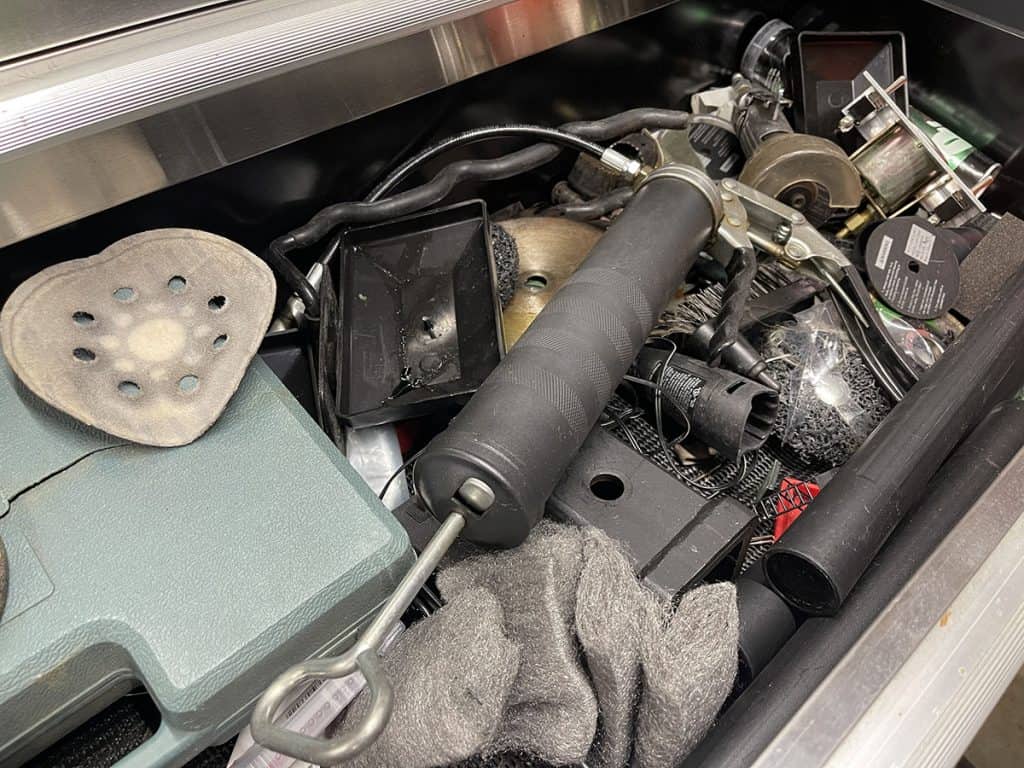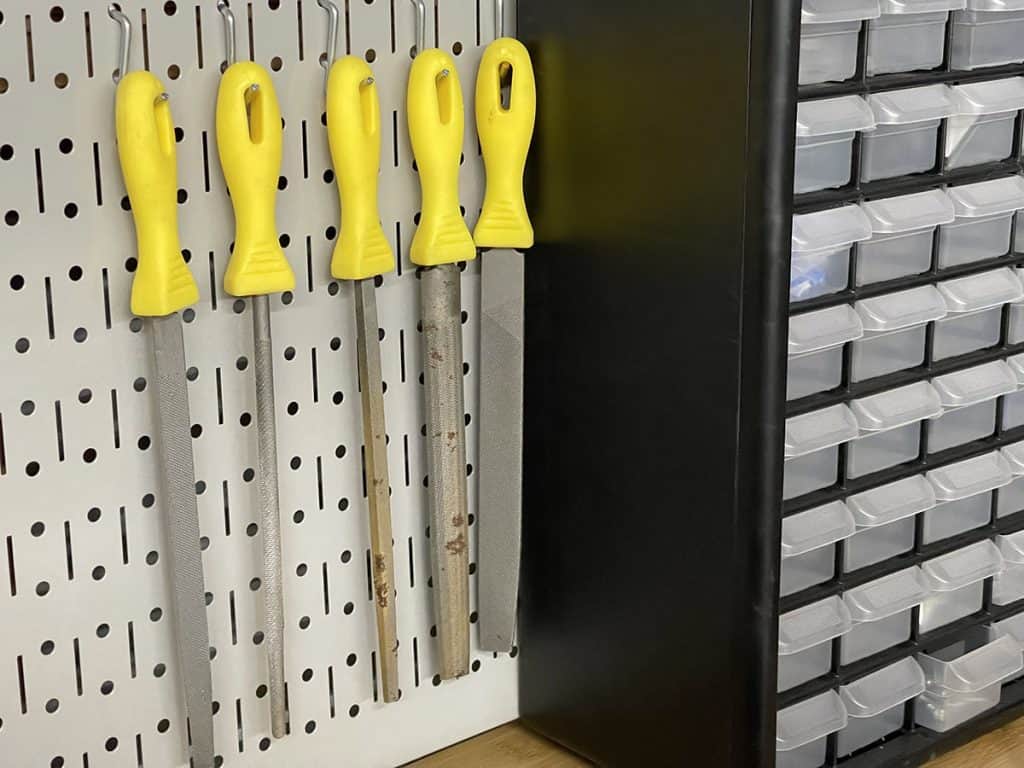For many people, a garage is much more than a place to park their cars. It is often a space for hobbies, projects, and other creative endeavors. Whether you are a DIY enthusiast, a woodworker, or an automobile enthusiast, having a well-organized workshop garage is essential. Staying organized helps make the most of your space and keeping your tools and equipment safe and easily accessible.
In this article, we will explore some practical tips and strategies for organizing your workshop. From organization and maximizing storage space to creating dedicated workstations, these ideas can help you transform your garage into a functional and inviting workspace. Whether you have a large, wide open shop or smaller space, we’ll cover tips anyone can use. Several of this strategies are based on a methodology called 5S Kaizen. I was first introduced to this method when I was working in the medical device industry. Our supervisor over the incoming quality assurance area revamped his department based on 5S, and the results were quite noticeable! Other departments took notice and started implementing 5S themselves.
What is 5S Kaizen
5S is a workplace method of organizing that involves five steps: Sort, Set in Order, Shine, Standardize, and Sustain. It aims to create an efficient and organized workspace by eliminating clutter, organizing tools and materials, cleaning regularly, establishing clear workflows, and maintaining the improvements over time. The method originated in Japan and has been widely adopted in manufacturing, healthcare, and service industries around the world. Stick with me here, and we’ll dive into how 5S can be applied to your workshop.

Apply The Five Steps of 5S to Your Workshop:
- Sort:
Before you can begin organizing your workshop, you need to declutter and sort all the items you have. This can be a daunting task, but it is an essential first step in creating an organized and functional workshop. Sort through all items in the workspace and remove any unnecessary or unused items. Keep only what is truly needed. Start by taking everything out of your garage and sorting it into piles based on category. For example, you might have piles for tools, equipment, supplies, and materials. Once you have sorted everything, decide what you want to keep, what you want to sell or donate, and what you want to discard.
Be honest with yourself about what you need and what you don’t need. If you haven’t used a tool or piece of equipment in a year or more, consider getting rid of it. This will help you free up space and create a more streamlined and efficient workshop. - Set in Order:
Organize the remaining items in a logical and efficient way, so that they can be easily accessed when needed. Once you have decluttered and sorted your workshop garage, it’s time to think about storage. The goal is to maximize your storage space while keeping your tools and equipment organized and easily accessible. Think about the order in which you need things, from typical projects using materials and which tools, etc.
Consider using a combination of shelving units, cabinets, and pegboards to store your items. Shelving units are great for storing large items like power tools and equipment, while cabinets are ideal for smaller items like hand tools and supplies. Pegboards are a versatile option that can be used to store a variety of tools and equipment, including hand tools, power tools, and gardening tools. Assign specific locations for everything and clearly label them. A key to keeping a work area clean and organized is having a place for everything. When something is not currently in use, it should be returned to it’s designated place.
Another storage option to consider is overhead storage. This involves installing shelves or racks above your workspace to store items that are not used frequently. This can be a great way to free up floor space and keep your workshop organized. - Shine:
Clean and inspect the workspace on a regular basis to maintain cleanliness and identify anything that isn’t working or could be improved. If you’re having to go from one corner of your workshop to another time after time, can you re-arrange where these items are located? - Standardize:
Establish standard processes for maintaining the first three steps of 5S. A process only works if you actually use it and follow through. Get in the habit of refining how you will use and continue to use your own adaptation of 5S. - Sustain:
Organizing your workshop garage is not a one-time task. It requires ongoing maintenance to ensure that your space remains organized and functional. Continuously improve and sustain the 5S system over time. Make 5S a daily habit and look for continuous improvement how you can get more organized, work more efficiently, and keep a clean workshop.
Make it a habit to clean up your workspace after each project. This includes putting away tools and equipment, sweeping the floors, and wiping down your workstations. By keeping your workspace clean and tidy, you will be more motivated to work on projects and less likely to feel overwhelmed by clutter and disorganization. Keep everything in it’s place when not in use and you’ll save time not hunting around for that 10mm socket.
Another way to maintain your workshop garage is to regularly review your storage and organization systems. As you work on projects and acquire new tools and equipment, you may find that your storage needs change. Be open to adjusting your systems as needed to ensure that you are making the most of your space and keeping everything organized and accessible.
Finally, consider scheduling regular maintenance tasks for your tools and equipment. This might include cleaning and oiling your power tools, sharpening your hand tools, and checking the oil and filters on your car. By taking care of your tools and equipment, you can extend their lifespan and ensure that they continue to work properly.

Additional Tips
Create Dedicated Workstations
In addition to storage, it’s important to create dedicated workstations in your workshop garage. This will help you stay organized and efficient while working on projects.
Think about the types of projects you typically work on and create dedicated workstations for each one. For example, if you enjoy woodworking, you might have a dedicated workstation for your saws, drills, and other woodworking tools. If you enjoy auto repair, you might have a dedicated workstation for your tools and equipment related to car repair.
When creating your workstations, think about the flow of your workspace. You want to make sure that each workstation is easily accessible and that you can move from one workstation to another without any obstacles or clutter.
Label Everything
Labeling is an important part of workshop garage organization. It helps you keep track of your tools and equipment and ensures that everything has a designated spot.
Consider using a labeling system that is easy to read and understand. You might use a label maker to create clear and legible labels for each item, or you might use a color-coded system to group items by category. You can have silhouette vinyl or silkscreening on your pegboards to know what tool goes where.
In addition to labeling your tools and equipment, it’s also important to label your storage containers. This will help you quickly find what you need and ensure that everything is returned to its proper place after use.
Conclusion
Organizing your workshop garage can be a challenging task, but it is essential to creating a functional and efficient workspace. By decluttering and sorting your items, maximizing your storage space, creating dedicated workstations, labeling everything, and maintaining your space, you can transform your garage into a place where you can work on projects and pursue your hobbies with ease. Remember, a well-organized workshop garage not only makes your projects easier, but it can also increase your productivity, creativity, and enjoyment of your hobbies.

